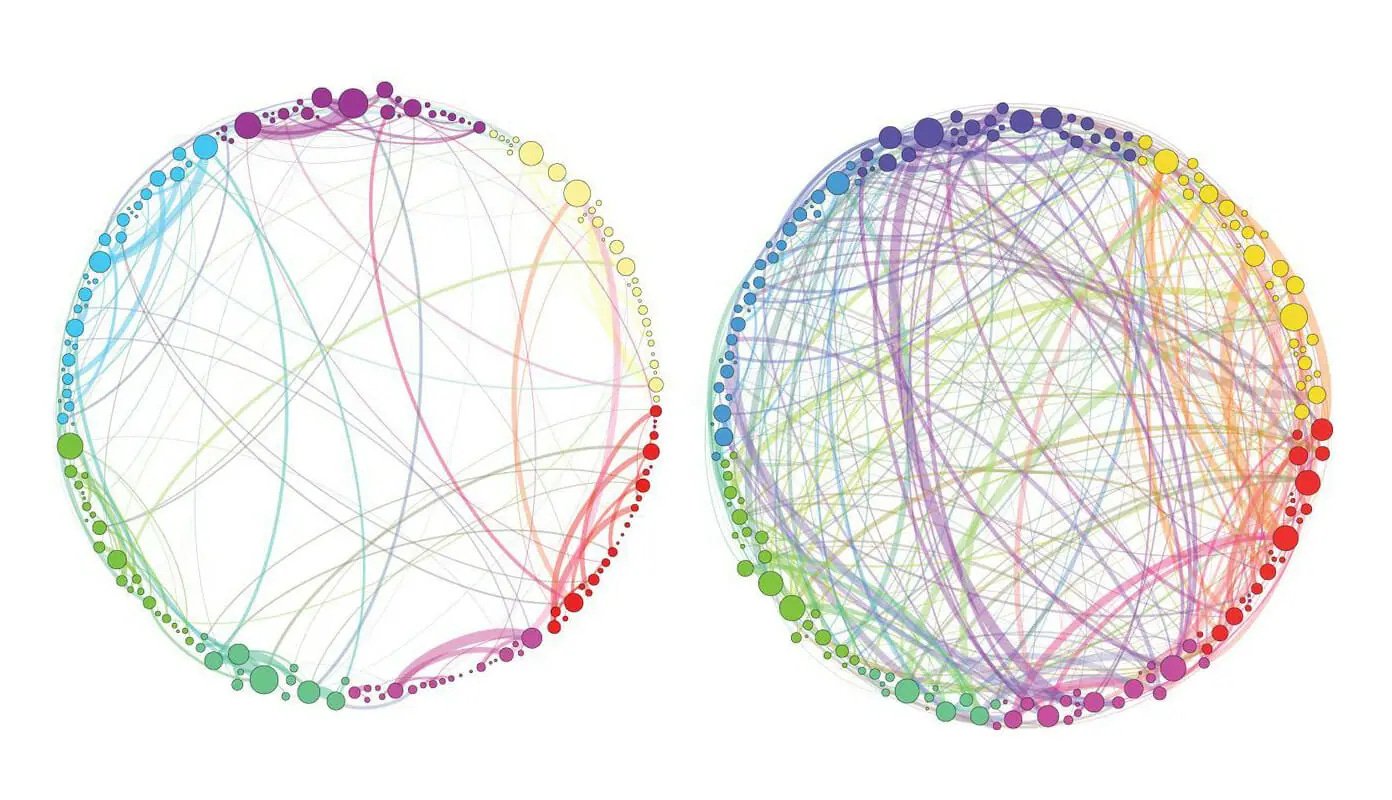How do Psychedelics work?
A brief analogy + Break down to break through.
We’ve all seen the images of “The brain on psychedelics,” where the brain 🧠 seems as lit up as a Christmas tree:

These images imply that the entire brain is more connected under psychedelics. That’s mostly true—with one not-so-small detail.
The brain on psychedelics actually reduces activity in one specific network: the Default Mode Network (DMN), while experiencing hyperconnectivity in other areas. The DMN is the brain Self referential hub, it comes online around age five and is active during periods of rest. It’s the network thought to facilitate the construct of “Self” capital S, as it is linked to thoughts around identity and inner narrative. It’s also been found to be particularly overactive in conditions like depression, anxiety, OCD, and more.
To understand how serotonergic psychedelics work, consider the following analogy:
Think of your brain as a large metropolis city. The Default Mode Network is like its busiest streets—jammed with traffic, even when nothing’s going on. Now imagine shutting those streets down to build better ones in their place. That’s the effect of psychedelics: pausing the normal functions of the DMN, aka the Self.
People trying to move around the city while those streets are closed must find alternate routes. Decreased activity in the DMN (the main streets) makes way for new neural pathways to emerge through lesser-used connections (alternative routes). This can manifest as a new perspective, increased creativity, self-compassion, forgiveness, inspiration, motivation, and more.
Breakdown to breakthrough
Sounds lovely, right? Well—when the DMN dissolves, the familiar becomes out of reach. And creatures of habit that we are, we cling to our default—even if it’s painful—simply because it’s familiar. When that default slips away, we often experience it not as relief, but as distress.
But that distress isn’t noise. It’s signal. It marks the very boundary of the known. The discomfort is not the obstacle—it’s the doorway.
A recent study published in Nature, examining timestamped psilocybin trip reports from Erowid, suggests a hidden temporal structure in the psychedelic experience. In short: there’s a pattern to the disorientation. It tends to precede resolution. We break down before we break through.
Ayahuasca follows a similar arc. An fMRI study found that ayahuasca reduces DMN activity while activating regions tied to emotion and sensation—helping explain why early nausea or fear isn’t a side effect, but part of the process.
So next time you’re experiencing a challenging come up, let science remind you: Trust the process. We close the busy streets to build a more connected, lively city.


